The next morning we arrived in Penzance, bright and early to catch the Scillonian III out to Hugh Town, the largest settlement of the Isles of Scilly. Whilst it proved to be a rough crossing, it was certainly an interesting one…
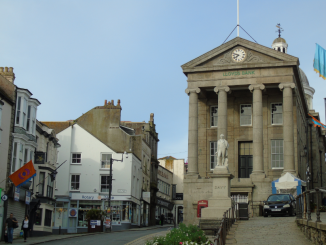
Penzance Old Market & Guild Hall
Whilst we have been to Penzance before, and spent a good few hours exploring the promenade etc, we didn’t have time to get up into the heart of the town centre, where a few architectural, and indeed historical gems can be found.
As we arrived with plenty of time to spare before the ferry left, we had a quick wander up to the high street, and started outside the absolutely stunning “Market Building” completed in 1837. Designed by an Architect called Harris from the city of Bristol, the building was dual purpose, with the Market housed to the West (to the rear of the picture above) and a Guildhall to the East, the section we were facing. By 1867 a Grammar School had replaced the Guildhall, which had moved to new premises.
The building changed hands in 1925 when the Market was removed, and converted into the new Lloyds TSB Building, whilst the old Guildhall/Grammar School to the East was left, and remains, empty.
Just outside the building sits the “Davy Monument”, a statue of Sir Humphry Davy (1778 – 1829, Chemist from Penzance who invented the Miner’s Lamp, and discovered various metals on the Periodic Table).
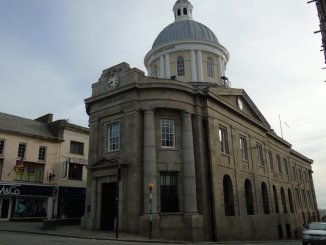
Penzance Market Hall
Moving to the rear of the building, we got a glimpse of the Market Hall section, now the main Lloyds TSB.
The building is topped by a large dome covered in lead, and was opened by Queen Victoria (1819 – 1901) herself in mid 1838. The dome is visible from all over the town, and was an easy landmark to spot as we pulled out of the harbour later on.
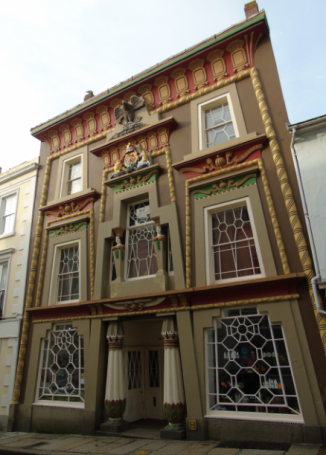
Egyptian House, Penzance
Moving off the high street, we came across the famous “Egyptian House” on Chapel Street, dating back to 1835. Whilst the actual architect is disputed (although it was most likely John Lavin), they have built perhaps the most intricately designed building in the whole of Cornwall, iconic enough to have it’s own Lilliput Lane Model!
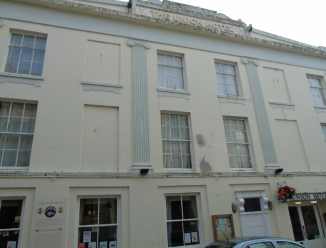
The Union Hotel, Penzance
Staying on Chapel Street, we found the “Union Hotel”, which is the oldest hotel in the whole town, built sometime prior to the 16th century as a large manor house.
It has seen various moments of history unfold here in Penzance, starting with an invasion by the Spanish in 1595, which saw the hotel badly burnt. An Assembly Room was later added as a major feature, along with a large Theatre which still exists today. Another defining moment for the Hotel came in November 1805, where it was the site of the first announcement in Britain of the Victory by the British in the Battle of Trafalgar, and the tragic death of Horatio Nelson (1758 – 1805, British Naval Officer).
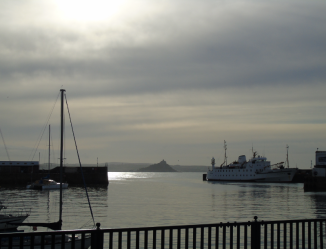
Scillonian III and St Michael’s Mount, Penzance
Returning to the harbour to join the queue to board, we got a great view out across the bay to the magnificent edifice that is St Michael’s Mount, a large Castle built on a rock that becomes an island at high tide.
In the foreground you can see the Scillonian III docked, and ready to receive us…
Scillonian III
Officially titled RMV (Royal Mail Vessel) Scillonian III, the boat was completed in 1977 at the Appledore Shipyard in Devon, taking her name from her predecessors on the route.
She later underwent a full refit in 1998 and is currently projected to remain in service until at least 2018.
I should probably take this opportunity to warn any of you planning to take the Scillonian III out to Hugh Town, as it does have two well known nicknames:
- The Great White Stomach Pump
- The Vomit Vessel
It is unfortunately well known for the rough conditions, and the state it sometimes leaves its passengers in. An hour after we set sail, I succumbed, along with about 3/4 of the boat, to extreme sea-sickness for the final couple of hours of the journey, so if you are particularly bad on boats you might want to fly instead from the airport near Land’s End.
We couldn’t help but be intrigued when we found out the company running the Scillonian III offers day trips, so you take an early sailing around 7am out to the islands, and return to Penzance by around 6pm. The total travel time is about 3.5 hours either way, so it’s quite a long day.
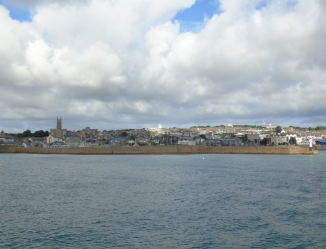
Setting Sail
We soon set off, leaving the town of Penzance far behind us. You can see the dome of the old Guildhall in the centre, and the Church of St Mary’s over the far left.
The weather would only improve as we sailed, and we were treated to some fantastic views as we followed the Cornish Coast for the next hour.
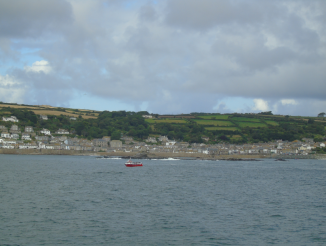
Heading along the coast past Penzance, we came level with the small fishing town of Mousehole, a quaint little place with a large harbour, guarded by two large piers which hold back the sea.
Just out into the water past the town is a small island called St Clements, which is only home to a large block of Granite from 1830 known as the Pepperpot.
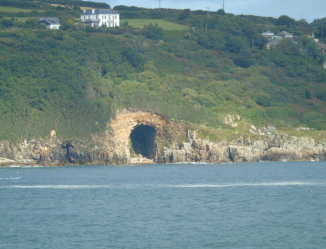
Cornwall’s coastline is full of wonders, and dotted along the shoreline we spotted numerous large caves, like the one shown above. Inside they must be vast and were probably used by Cornish Smugglers over the last few hundred years.
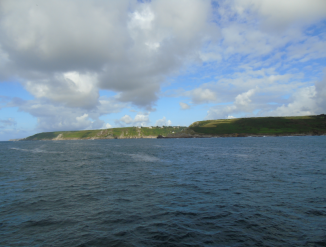
Around an hour after we left Penzance, we were coming to the very edge of the Cornish Mainland, and in the distance we could very faintly make out the Lighthouse at Lizard Point, the most southerly point in Great Britain.
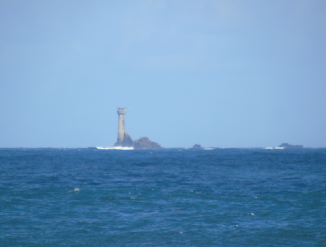
The final view we were treated to before heading out into the Atlantic proper, was Longships Lighthouse, which lies 1 1/2 miles off the coast of the famous Land’s End. Collectively called the Longships Isles, a Tower first shone it’s beam here in 1795, when Samuel Wyatt (1737 – 1807, Trinity House Architect) oversaw it’s construction. It was later replaced in 1873, to the version you see today, the only structure on the small island group.
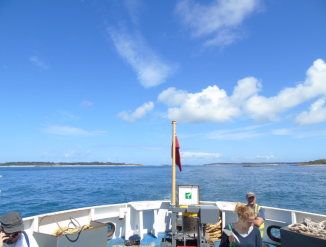
Sadly I missed a lot of the rest of the journey due to seasickness, although it was mainly open sea so there wasn’t much to see anyway. I recovered in time however to see us sail into the Isles of Scilly Archipelago, at the end of a 3.5 hour journey. It almost has it’s own eco-system here, with stunning blue water, golden beaches, and the calm seas around us.
There are five main inhabited islands, the largest of which is called St Mary’s, where the capital Hugh Town is located. They are all connected by local boats, however the Scillonian III only sails to St Mary’s.
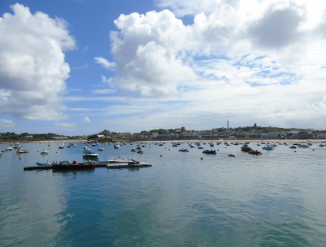
Hugh Town itself was a truly stunning sight to behold as we pulled into port. Hundreds of small fishing and pleasure vessels lined the harbour, with a long shining beach marking the promenade.
Over towards the left, on a rocky outcrop you can see the Lifeboat Station, complete with ramp down into the water. Other notable buildings on the skyline include the local Church (centre) and the Camera Obscurer that overlooks the whole town from the top of a hill (right).
A few minutes later we docked, and set out to explore England’s most remote outpost…


